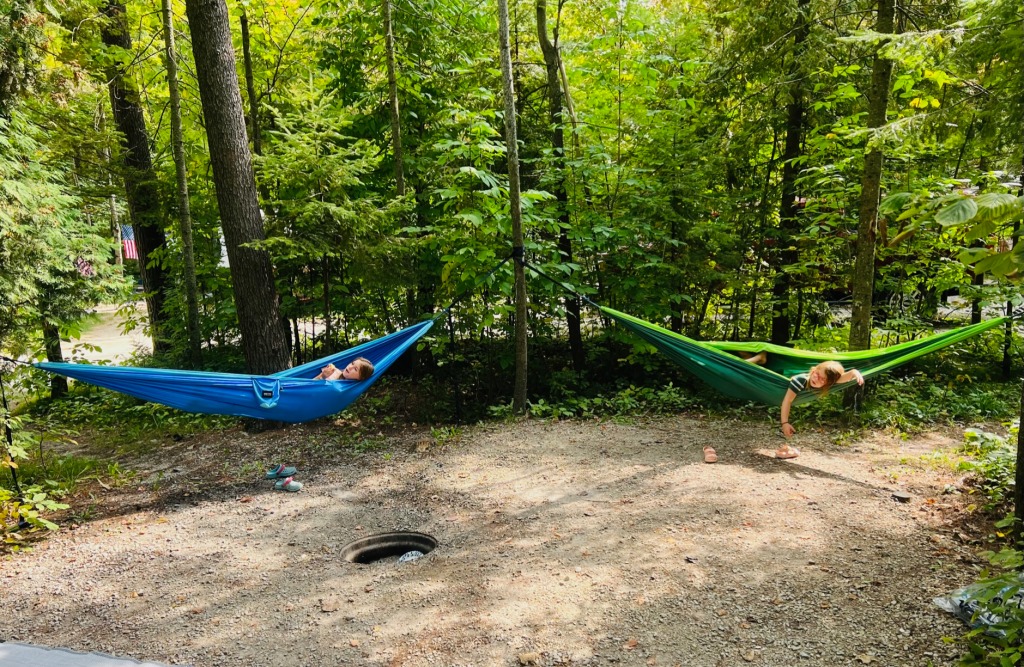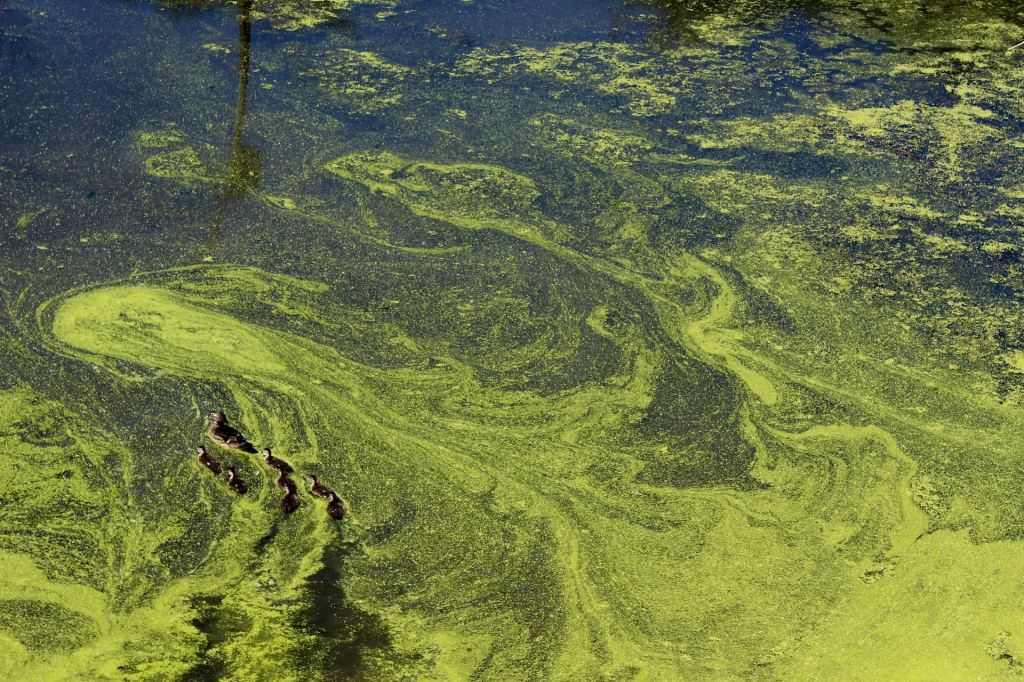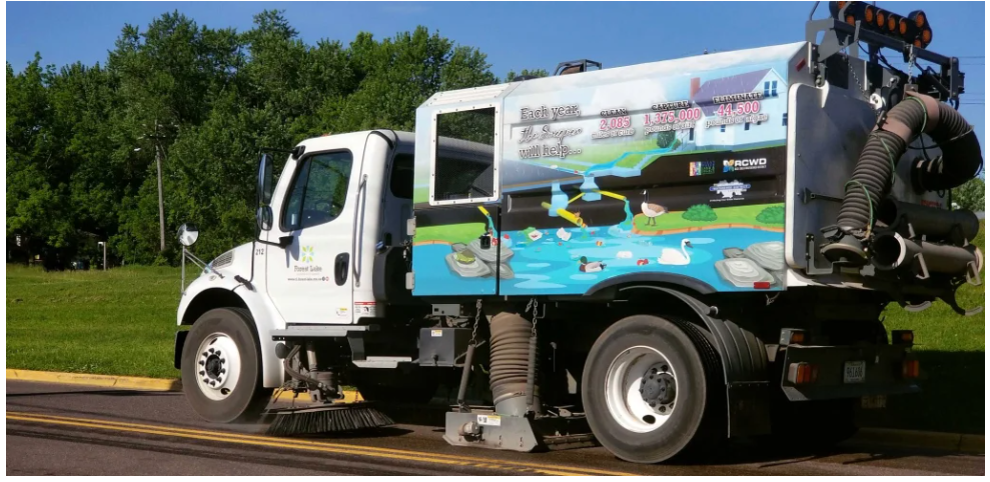Our family camps quite a bit, and my two daughters have high standards when it comes to campsites. The campsite bathroom must be close, but not too close. They always want to be close to a playground, if it exists. Having a little bit of open space to run or play catch is a bonus.
But by far, the most strict metric they have for a campsite is the presence of trees. More specifically, trees that are optimally placed to hang their camping hammocks.

I mean, I get it. Who doesn’t love gently swaying between trees, looking up at a leafy canopy rustling in the wind? There’s something about being around trees that just…helps people take a breath (I mean that figuratively and literally!).
It’s no wonder that even as we develop and urbanize landscapes, trees remain an ever present want and need. Aside from their aesthetic appeal, trees serve as natural air purifiers, reducing air pollution and improving overall air quality, which in turn leads to significant health benefits for city residents. Trees provide shade and evaporative cooling, helping mitigate they oft-mentioned ‘urban heat island’ effect. And they do play a role in managing stormwater runoff, with their deeper roots holding soil together and taking up excess water.
Yet, there is a dark side to our urban trees, and it’s getting many of our waterways in trouble.
As leaves start their mesmerizing color change this autumn and fall to the ground, many of them get caught along our curbs and are carried by water into our storm drains. Those drains, designed specifically to get rain and stormwater runoff off our streets as quickly as possible, drain directly into local lakes, rivers, and streams.
True or False: Storm drains take water to water treatment plants.
FALSE. the water entering storm drains does not go to water treatment plants – they are routed directly to our lakes, rivers, and streams.
At first glance, it doesn’t seem like that big of a deal. Leaves are a natural material, so what does it matter if they are transported to a local lake or river via a storm drain?
The issue is that without that stormwater system, those leaves (and other organic matter) wouldn’t likely travel the distance to nearby water bodies. They would stay on the ground and decompose there, releasing nutrients like nitrogen and phosphorus that act as fertilizers for the soil. That’s a good, happy thing!
But because we have given them a direct conduit to our waterways via stormwater drains and pipes, suddenly we have a huge volume of organic matter coming in that will decompose in our lakes, rivers, and streams instead. As leaves decompose, they release those nutrients which causes algal growth and in excess, can develop into those not-so-awesome algal blooms. That’s a bad, sad, thing.

And in fact, even if the physical leaf itself doesn’t make it into the storm drain, there is still an impact. Rain water or melting snow percolating through piles of decaying leaves is enough to collect those dissolved nutrients and carry them to our storm drains and on to our waterways.
A 2019 USGS study found that that nearly 60% of the annual phosphorus load in receiving waters can come from leaf litter in the fall. Studies in the Twin Cities provide similar estimates – from 37-64%. We love our urban trees, but once those leaves fall, we need to get their leaves off the streets.
Enter the street sweeper. While many may think street sweepers are more about keeping our communities looking ‘tidy,’ they can be considered the unsung hero of cleaner water. Studies have shown that timely removal of leaf litter from the streets can reduce phosphorus loading of receiving waters by 80%. Not too shabby.

It’s cost-effective, too, given that its generally much cheaper to treat pollution at its source versus once it’s made it to a lake or river. Plus sweeping helps with stormwater infrastructure maintenance costs – it’s cheaper to sweep up leaves than it is to clear them from clogged up stormwater pipes.
Many communities already have detailed street sweeping programs – there is an art to timing sweeping runs in the spring and the fall to maximize the benefit of getting leaves off of the streets. It can be somewhat confusing for residents, but the one piece of advice I’ve heard repeatedly from public works employees is to practice some patience. They want to hit that sweet spot of maximum leaf fall before a big storm comes through.
Over the past year, the Lower St. Croix Partnership provided communities in our watershed the opportunity to evaluate their existing street sweeping operations, with the goal of adding additional strategic sweepings in the spring and fall to reduce pollution to the St. Croix River and its tributary lakes and streams. We worked with EOR to develop a tree canopy assessment protocol to better assess where street sweeping would be most beneficial and developed an incentive program to help communities finance additional sweepings.
We had sixteen communities across the watershed take advantage of the evaluation program, including Afton, Lake Elmo, Bayport, Baytown, Lakeland, Lakeland Shores, Lake St. Croix Beach, Linwood Twp., Marine on St. Croix, North Branch, Oak Park Heights, Rush City, Scandia, St. Mary’s Point, West Lakeland, and Wyoming. In addition, the communities of Forest Lake, Stillwater, and Woodbury are already implementing enhanced street sweeping programs.
So this fall, if you see a street sweeper slowly making its way up the street, thank it for helping keep our water clean!
P.S. You too can help keep drains clean! If you have storm drains in your area, adopt it through the Adopt a Drain program and join a community of people dedicated to keeping our waters healthy one drain at a time.